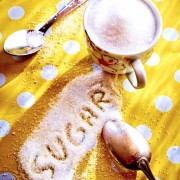Top takeaways from the School Nutrition Association’s Annual National Conference!
After days of education sessions, culinary demonstrations and general sessions, School Nutrition Association members were still excited enough to let out a rowdy cheer as the exhibit hall doors opened Wednesday for the final day of the 69th Annual National Conference in Salt Lake City. After all, you can never have too many free samples.
Here were my biggest takeaways from spending three days in the company of our nation’s lunch ladies (and gentlemen).
1. Smart Snacks sell
When I was in middle school, the most popular a la carte snack was the giant chocolate chip cookie—the unhealthier, the better. But since the Smart Snacks in School regulation just went into effect in the 2014-15 school year, working these items into cafeterias was a huge priority for ANC exhibitors. It probably was the largest food category I saw on the floor, and included items like all-fruit slushies, miniaturized ice cream bars, muffin tops and whole-grain versions of the ubiquitous pink-frosted cookie.
2. Not-so whole grain
The Healthy, Hunger-Free Kids Act decrees that to be labeled as such, 51 percent or more of all grains must be whole grain. Many products I saw on the floor were exactly that—51 percent whole grain, no more. While it meant that the flavors weren’t terribly different from traditional pretzels, pizza crust or chips, I wonder whether it would really be that tough to achieve, say, 55 percent to tout a more healthful product.
3. Communication is the first step to success
Seems like a no-brainer, right? Apparently not—it was the most common tip I heard throughout all three days of education sessions. Whether it’s training staff members to understand the signs of an allergic reaction; emailing members of Congress about reauthorizing the Healthy, Hunger-Free Kids Act; navigating the line between Community Eligibility Provisions and Title I status; or teaching kids that they’re throwing away money by wasting food, keeping the lines of communication open is paramount.
4. Little ideas with a big impact
During a session on the U.S. Food Waste Challenge, Sheldon E. Gordon of the USDA suggested that moving recess and gym classes before lunch cuts down on the amount of food waste. I’d never thought of that, but it makes sense—kids are hungrier after exercising. Cincinnati Public Schools have installed spice bars to help students flavor up foods while avoiding both salt and potential allergens. At a conference with more than 6,000 attendees, there was no shortage of seemingly obvious ideas just waiting to be applied.










